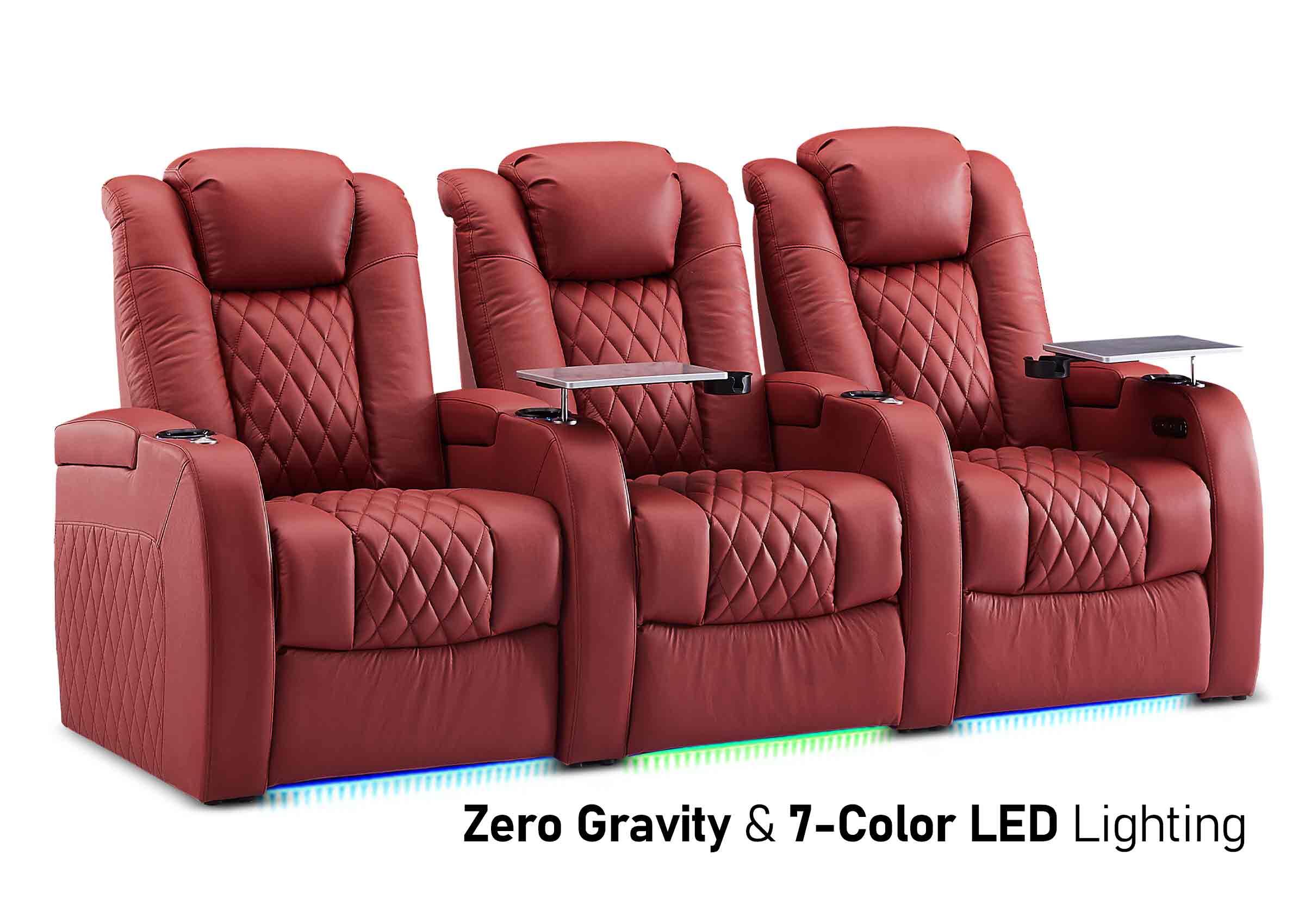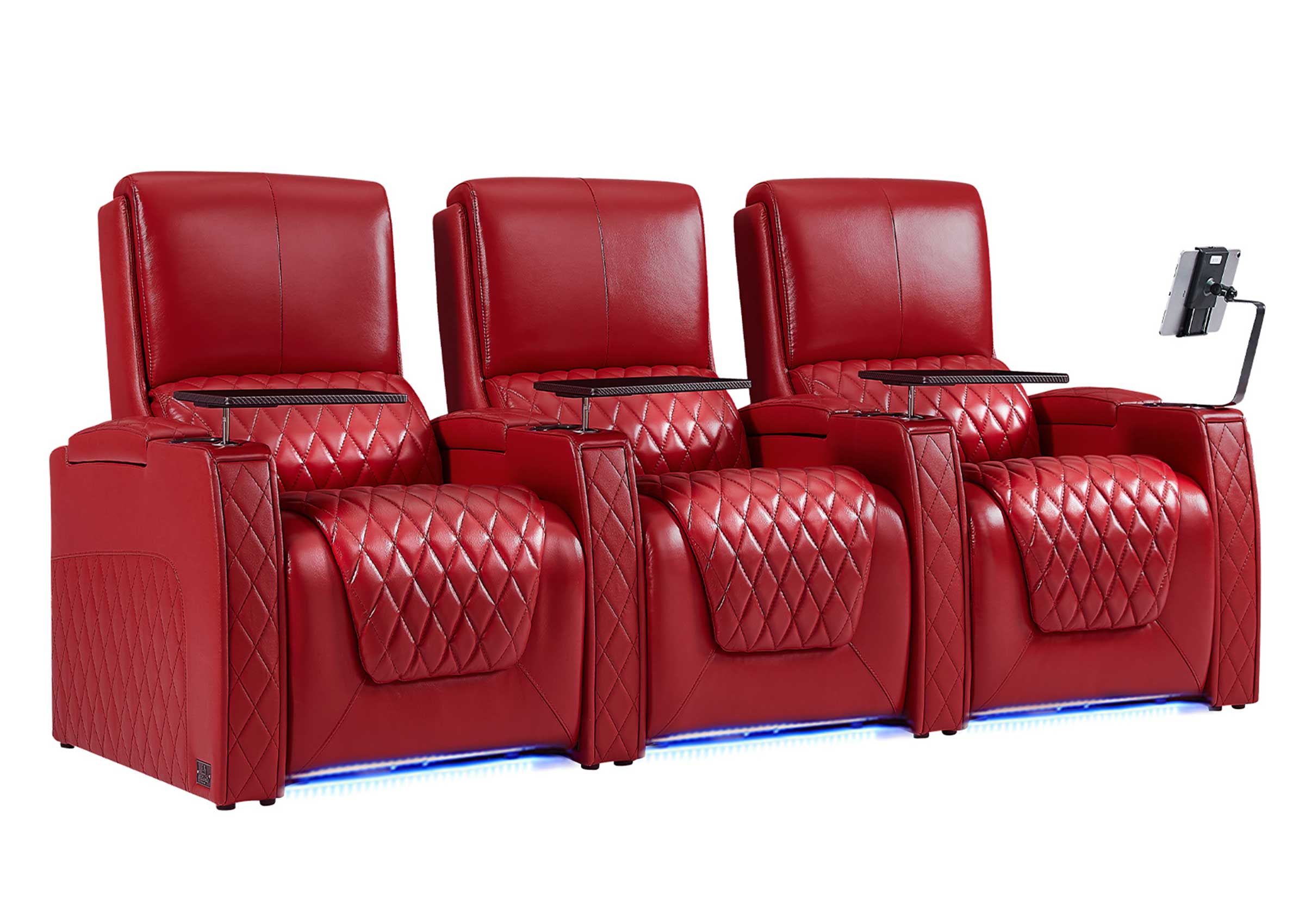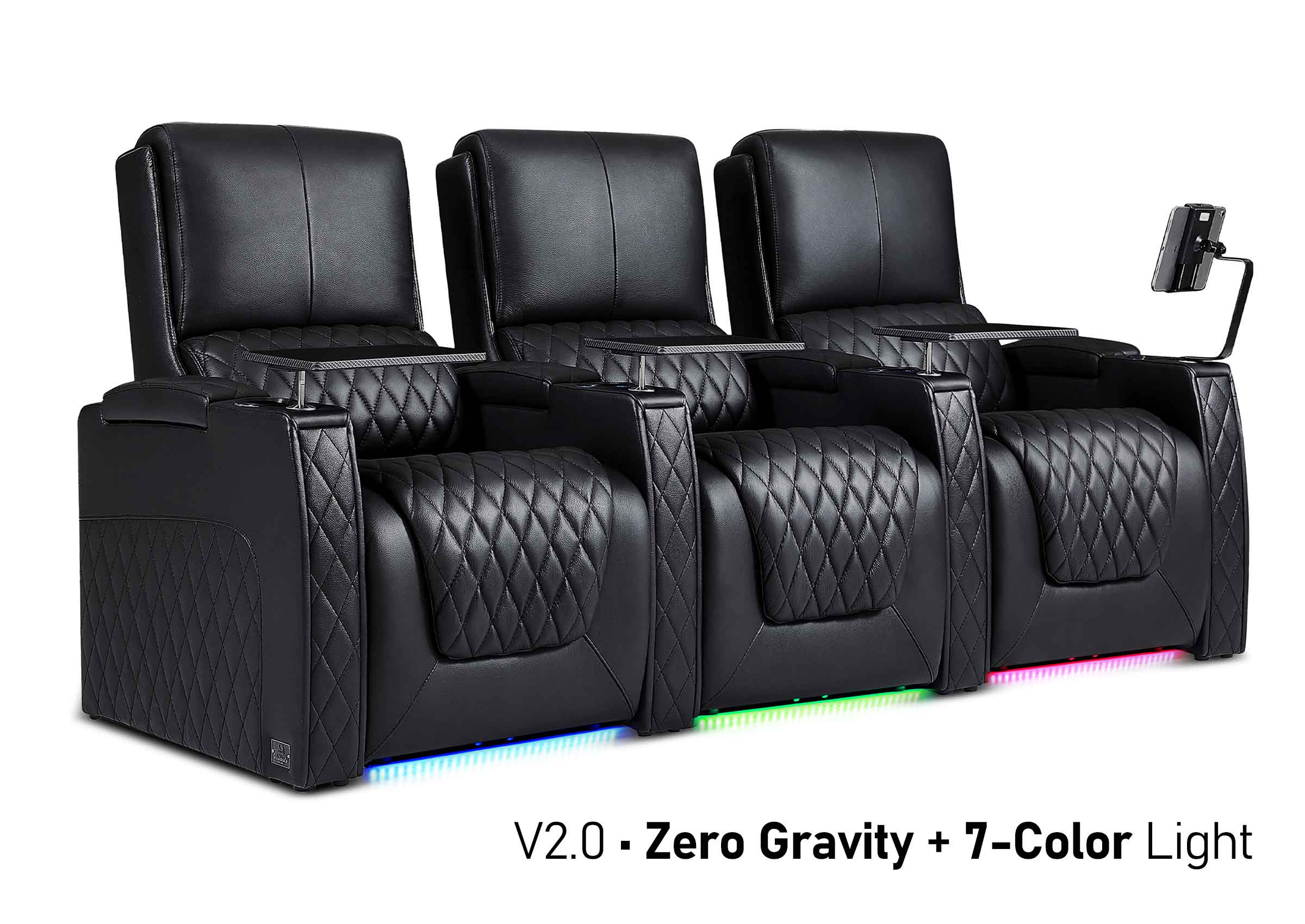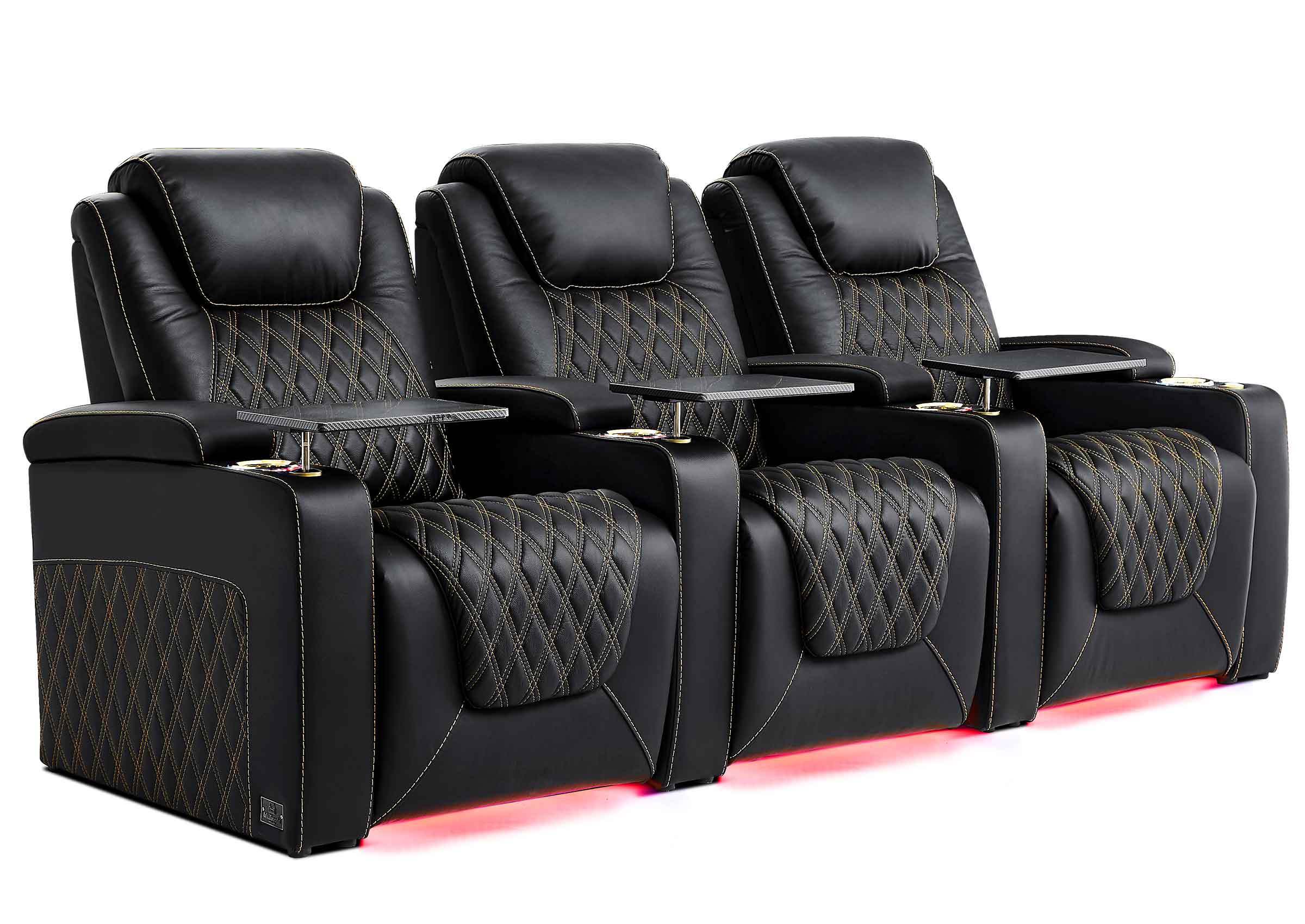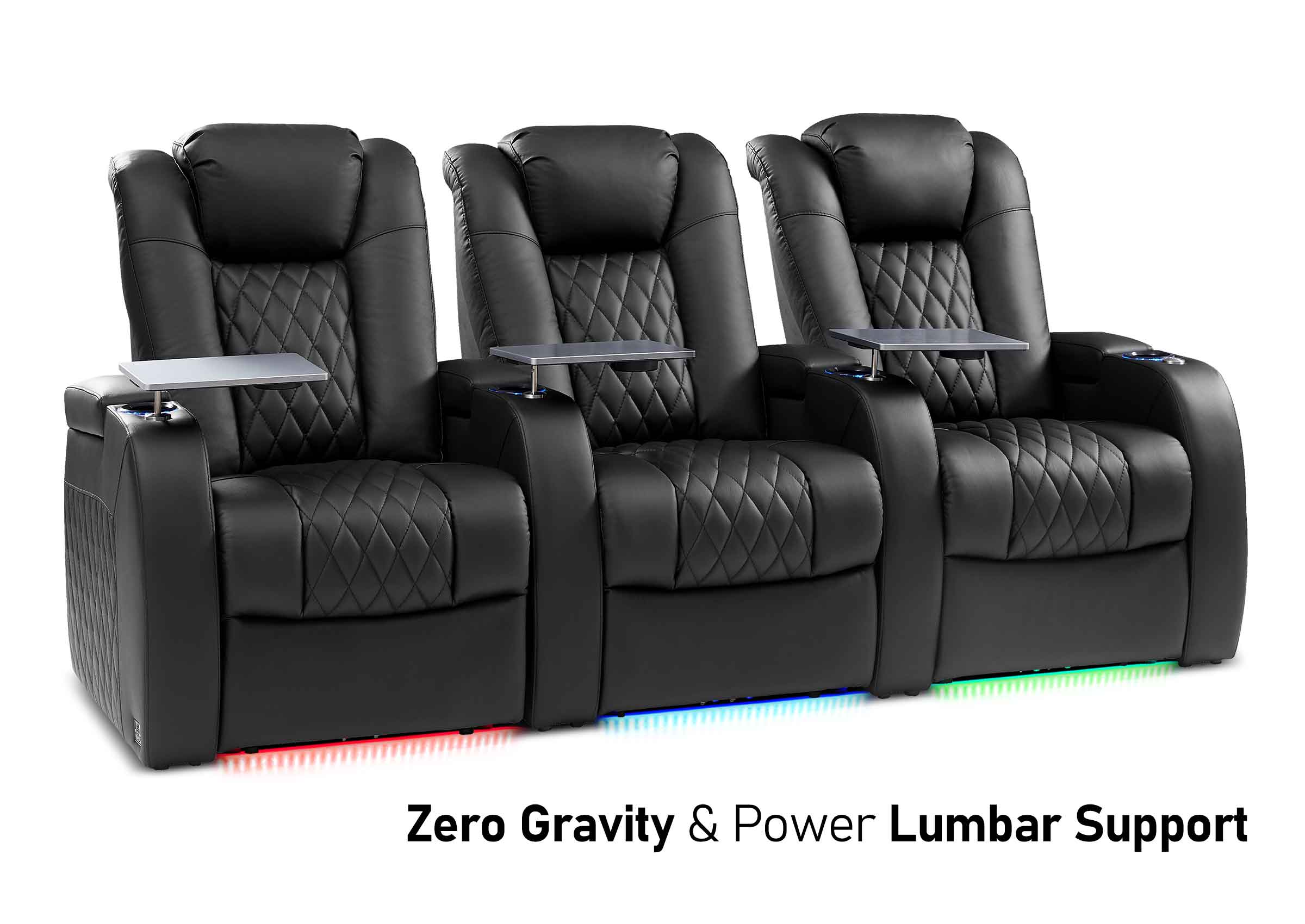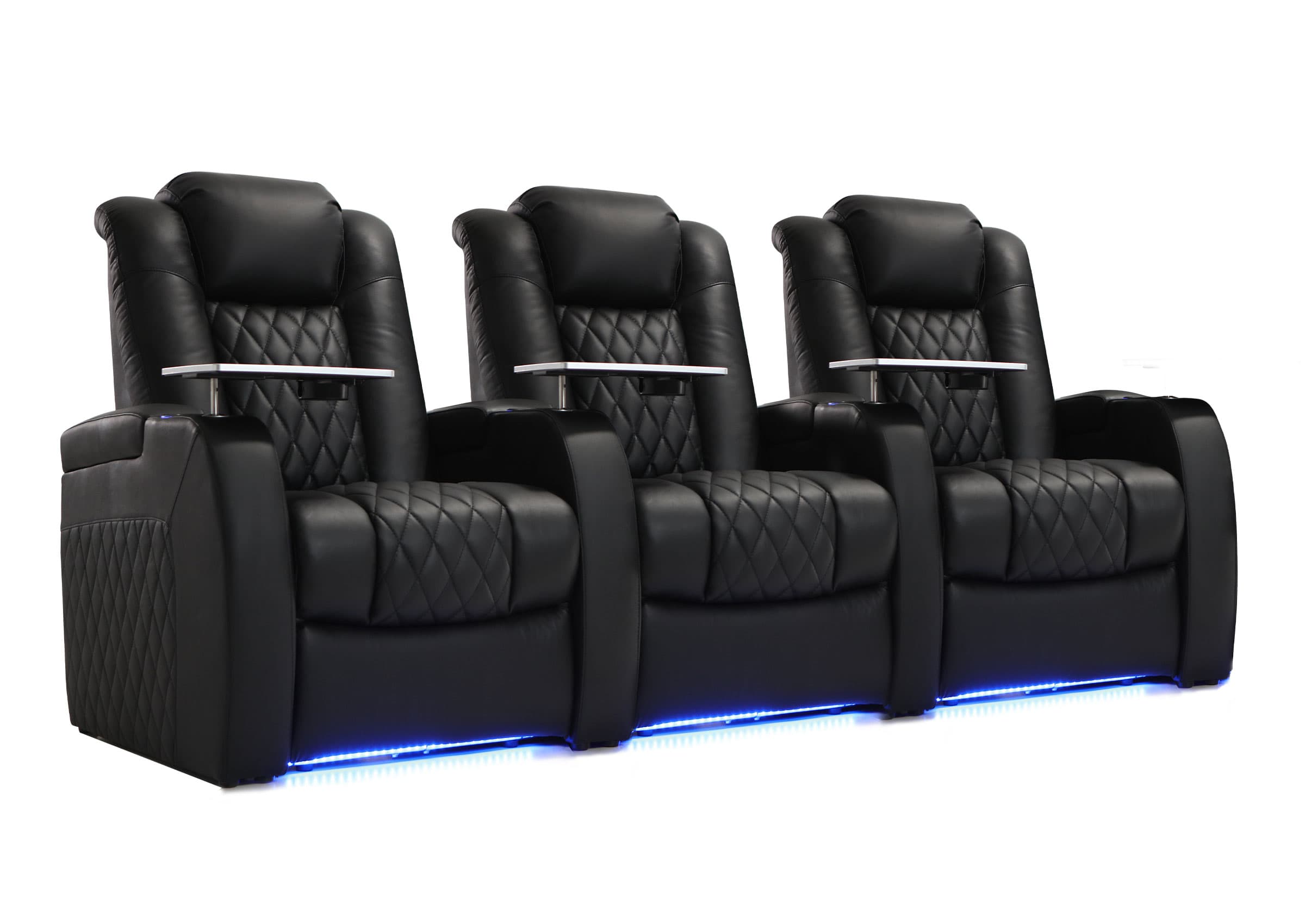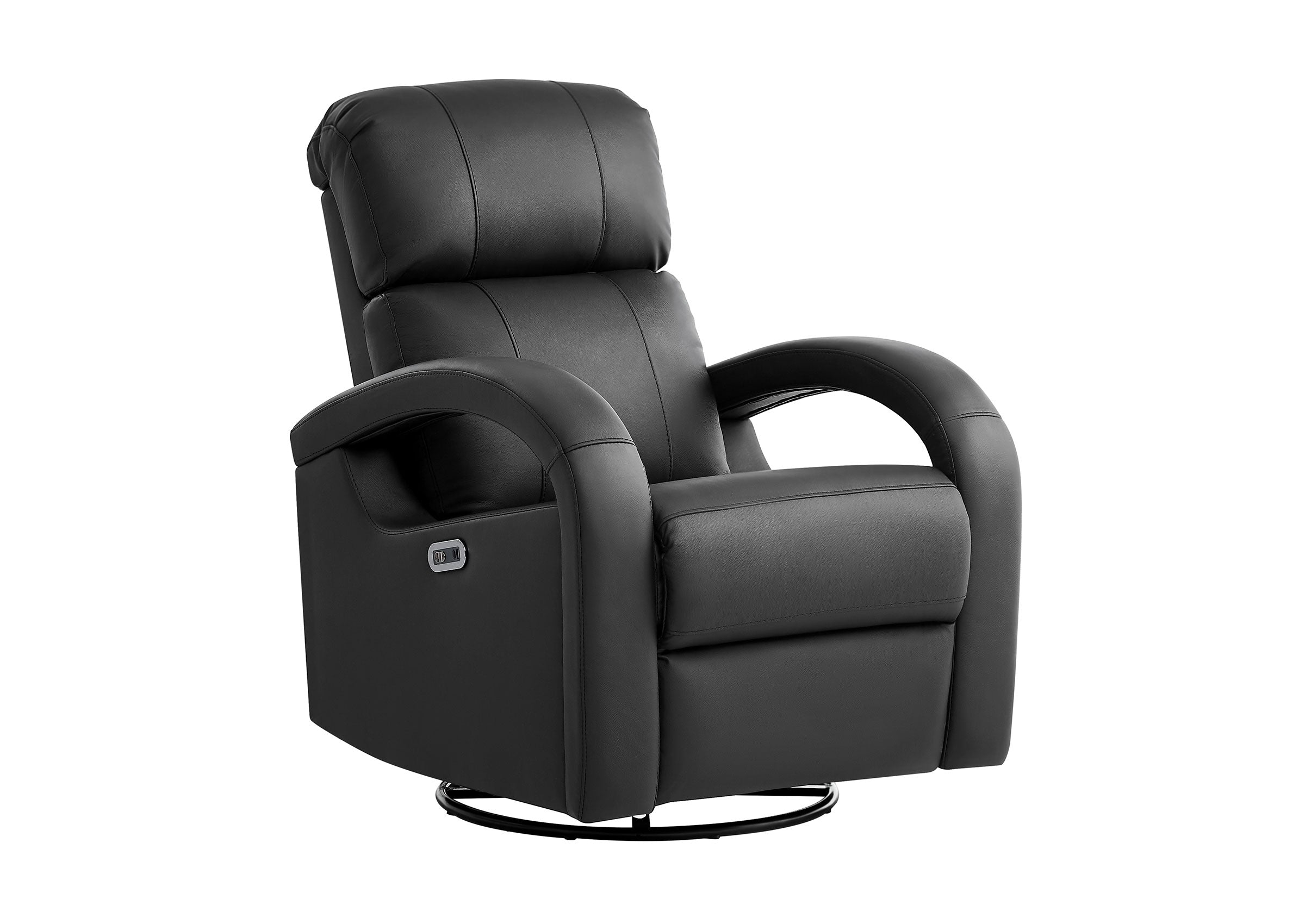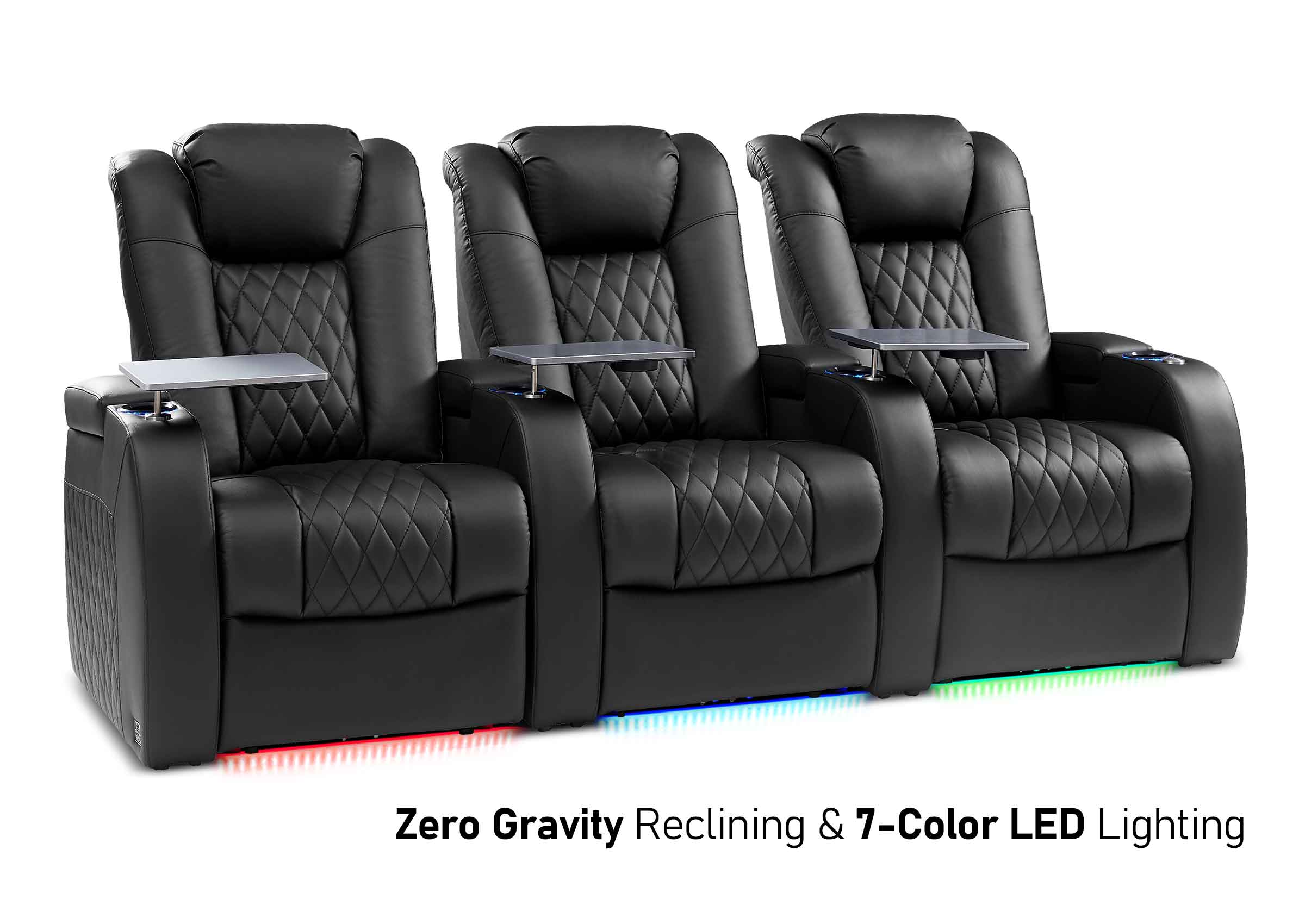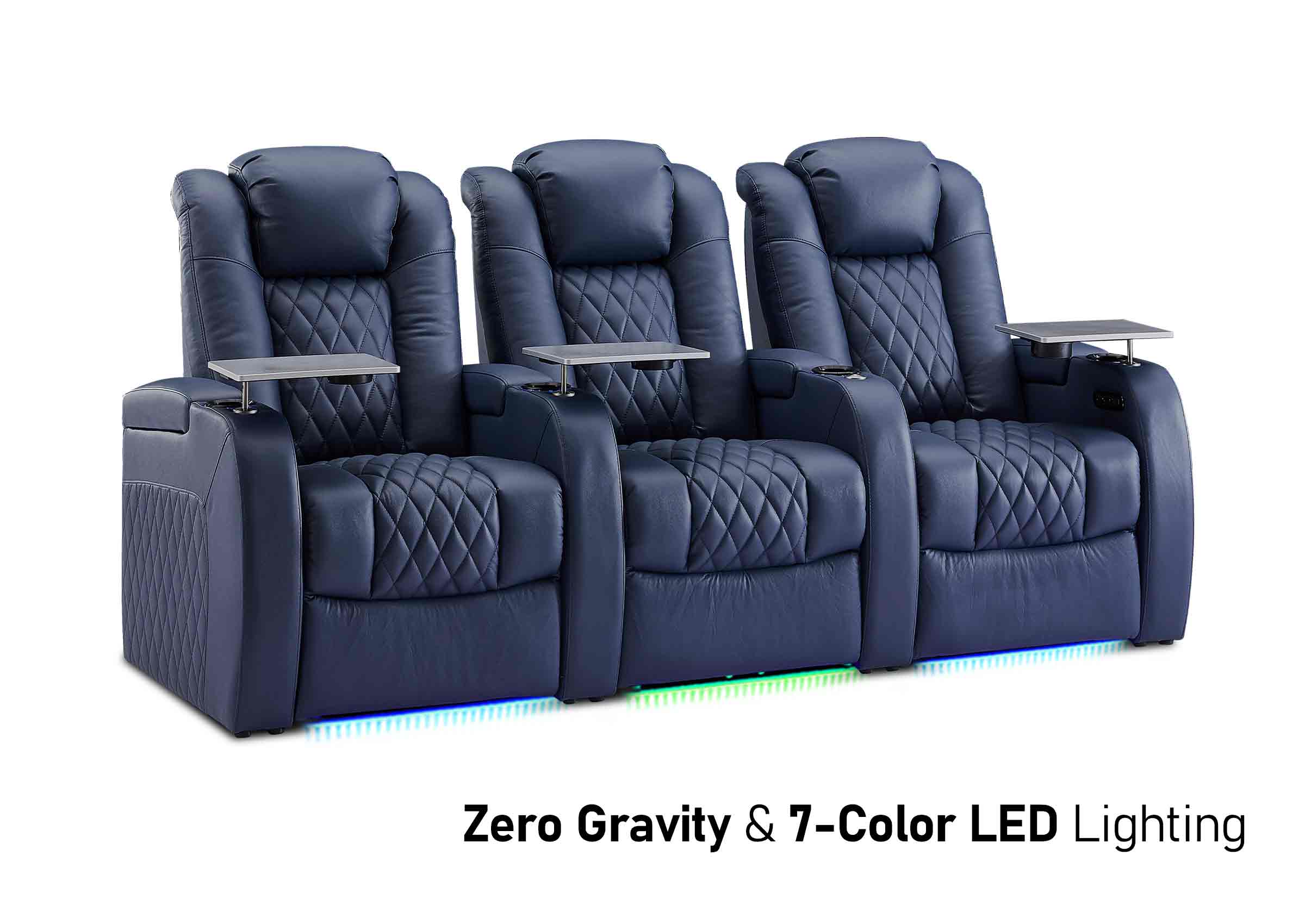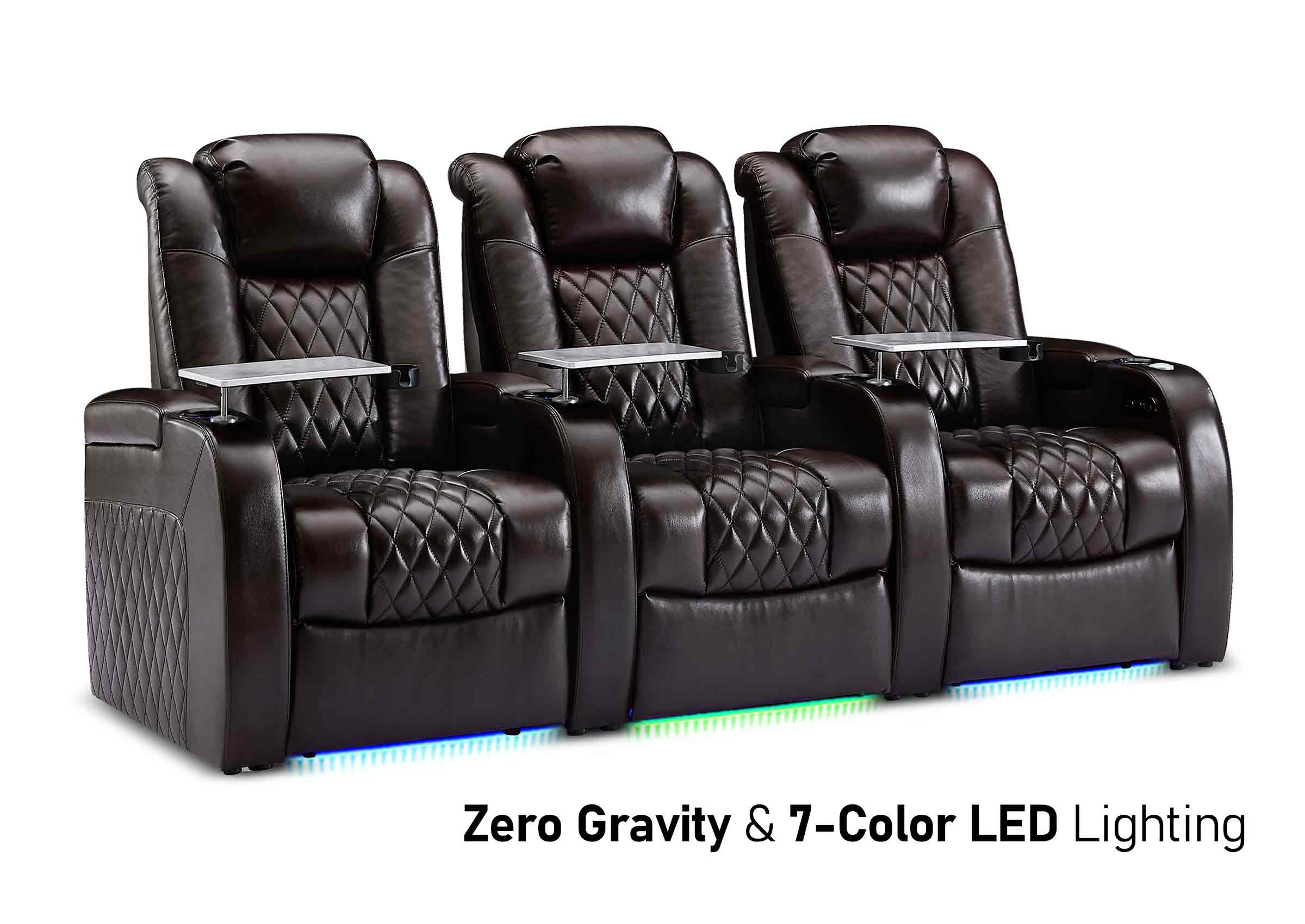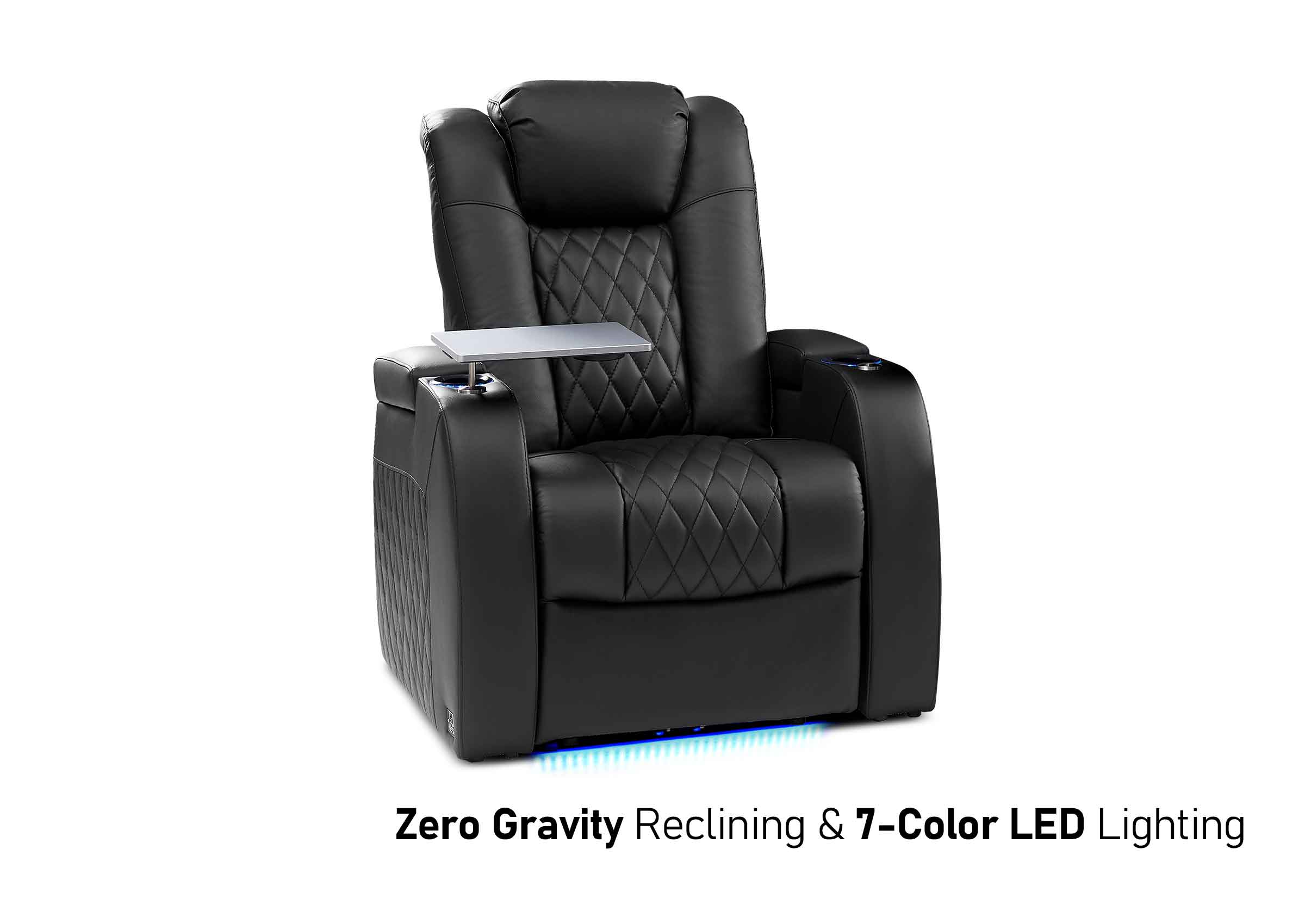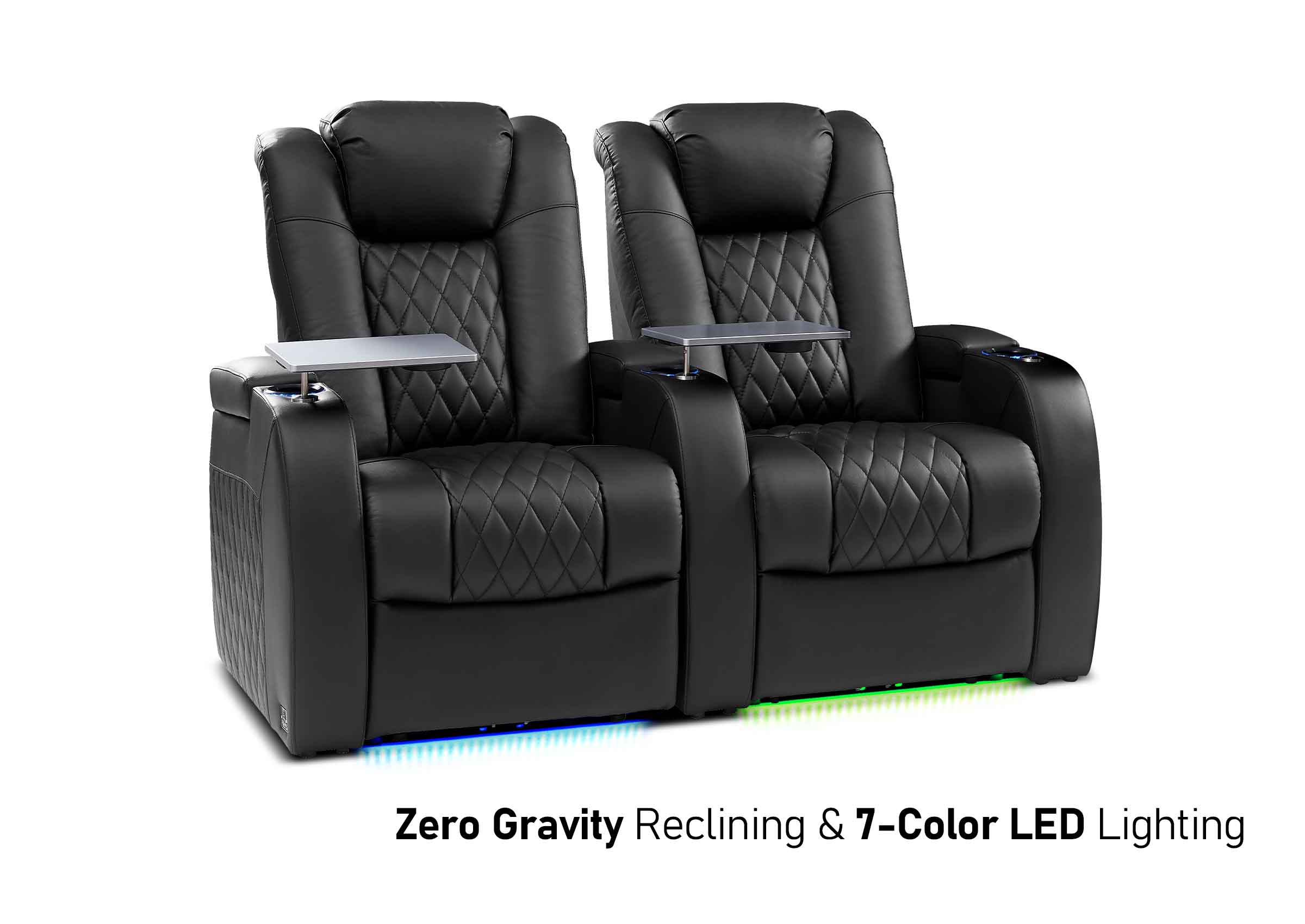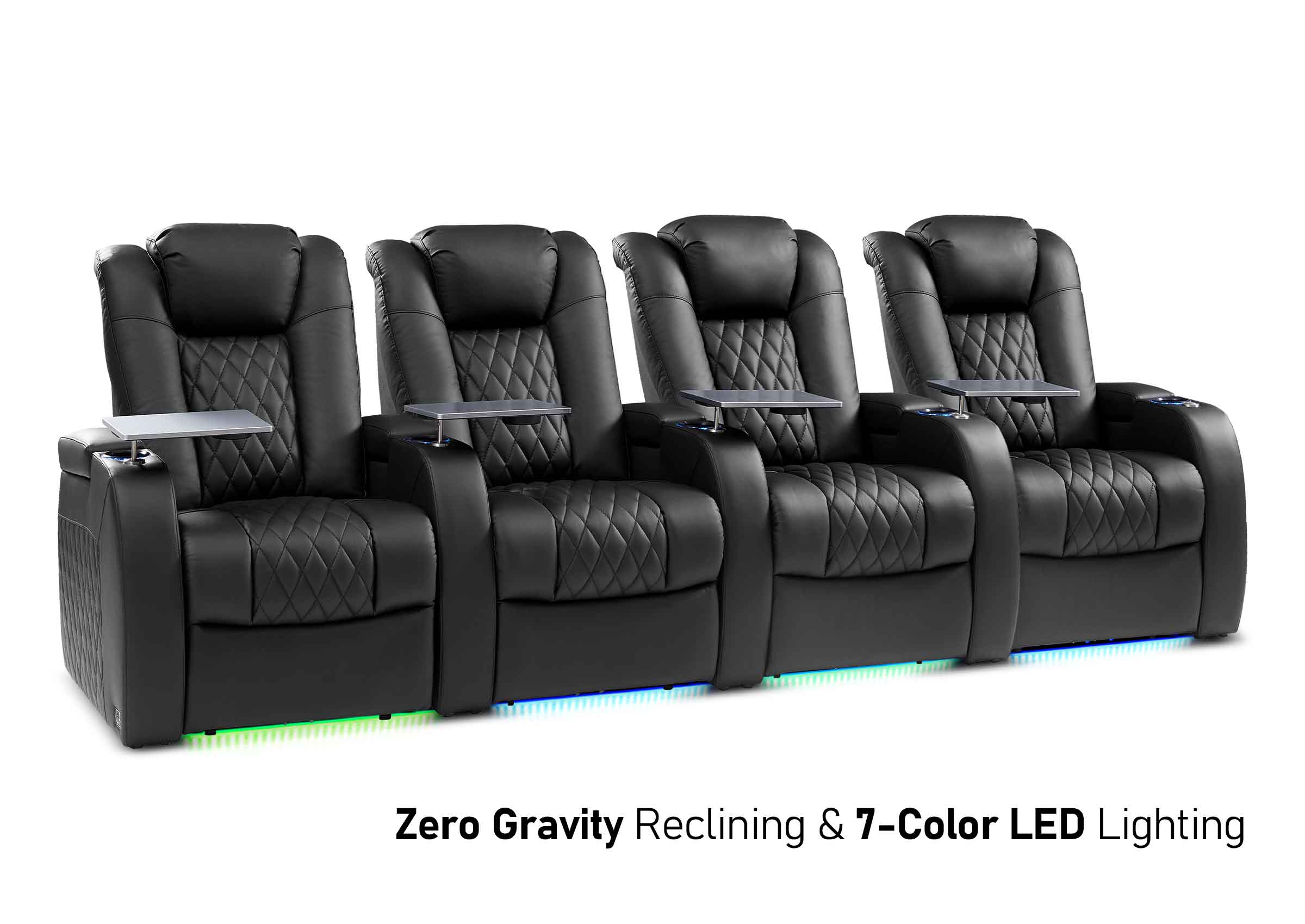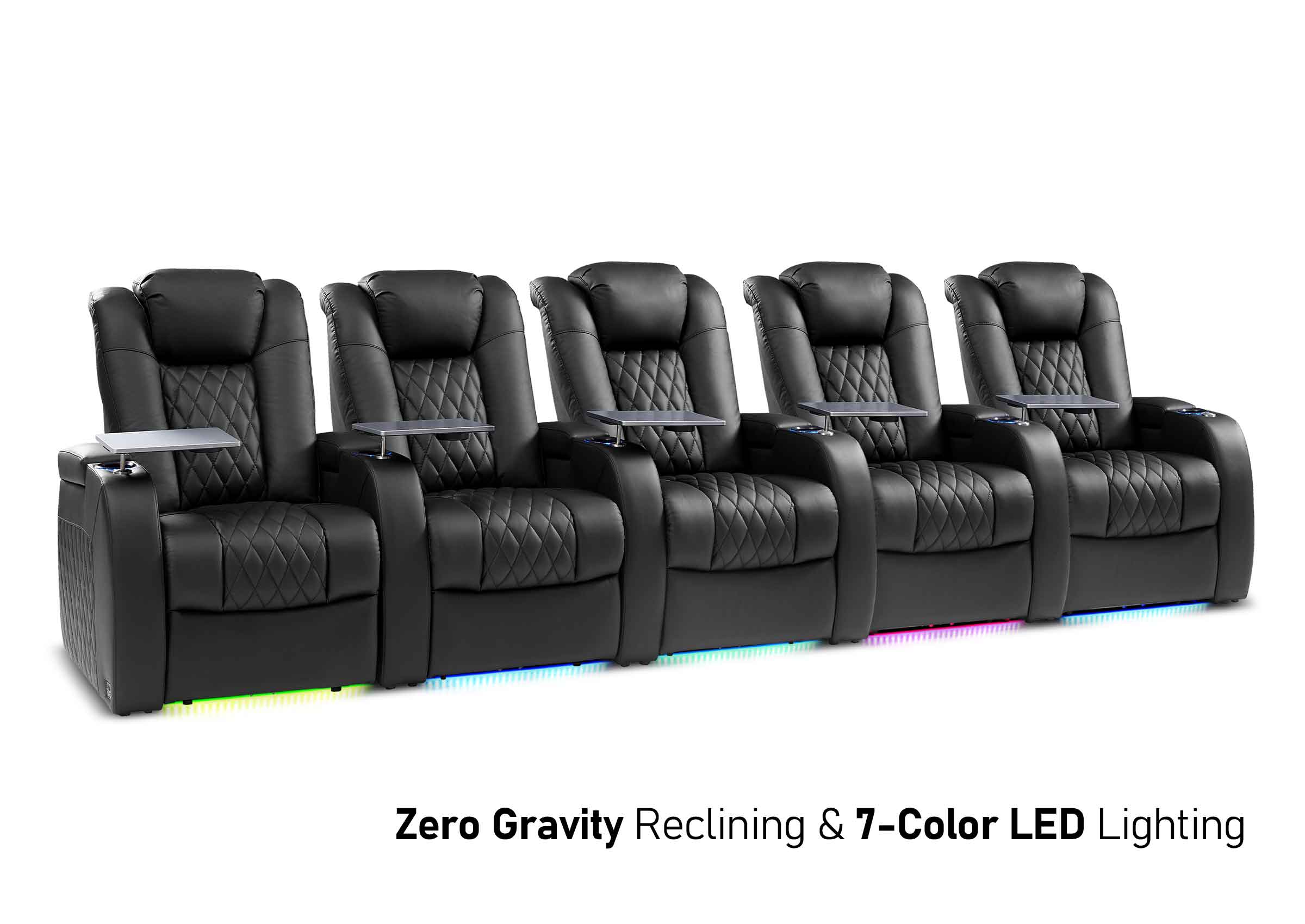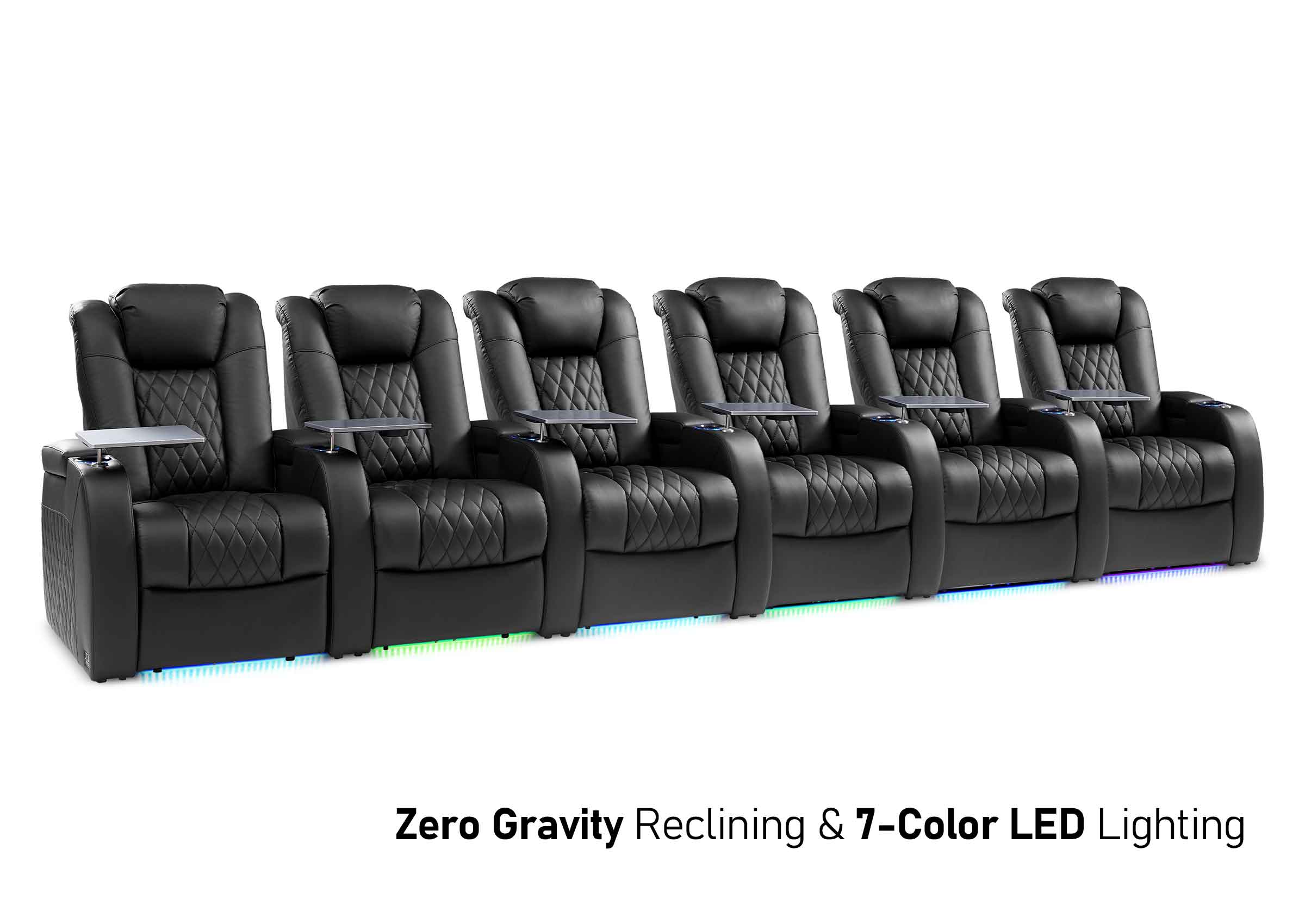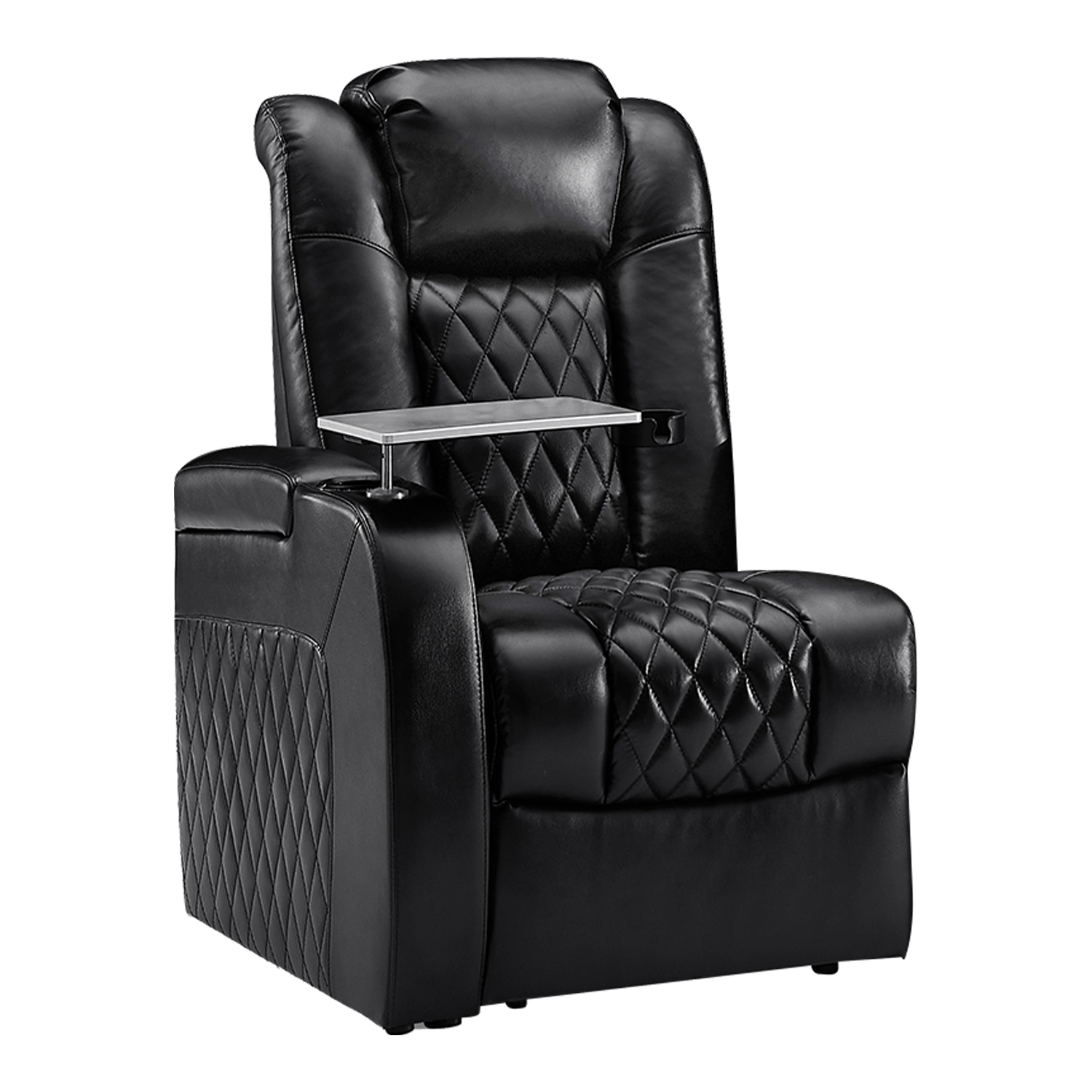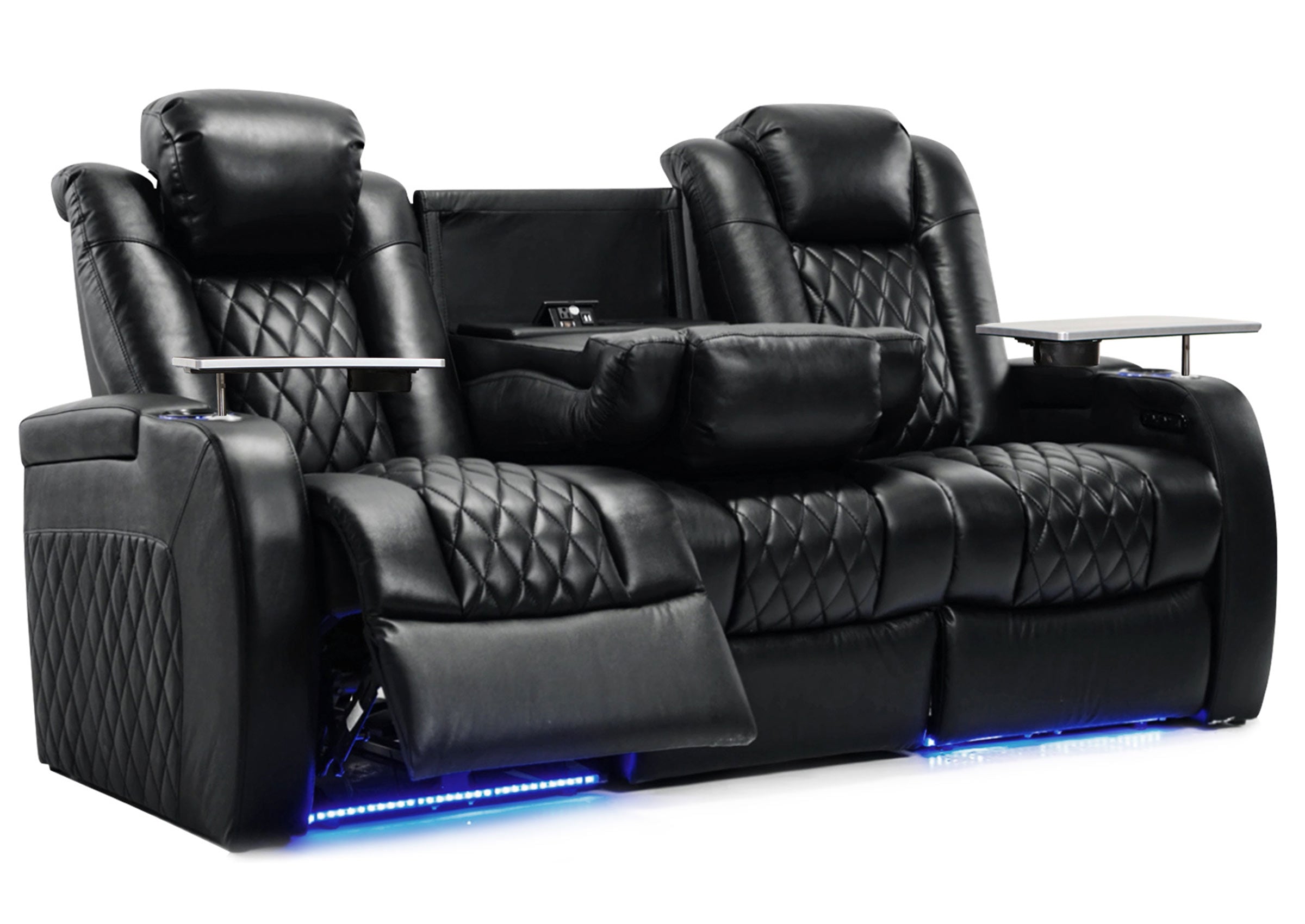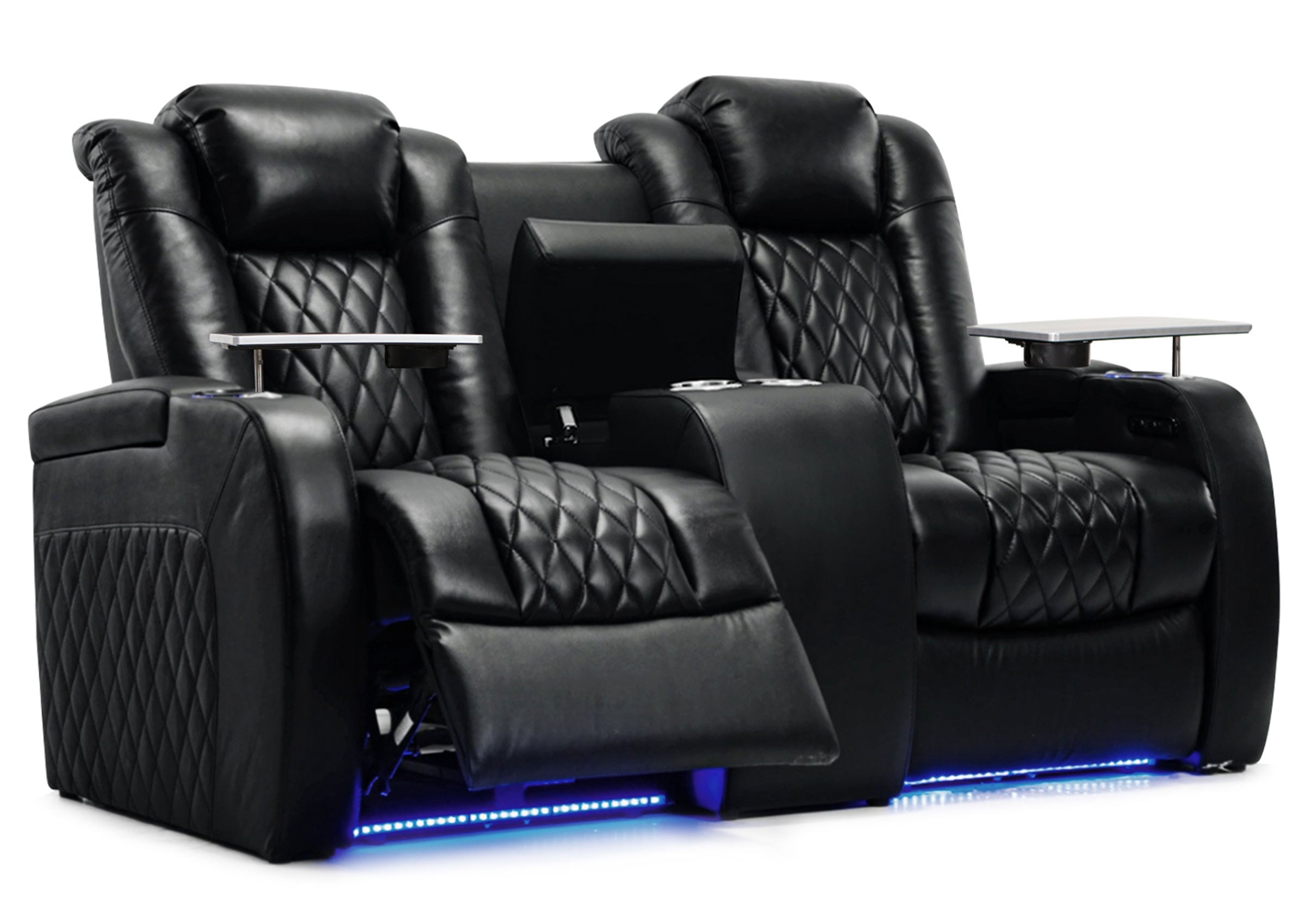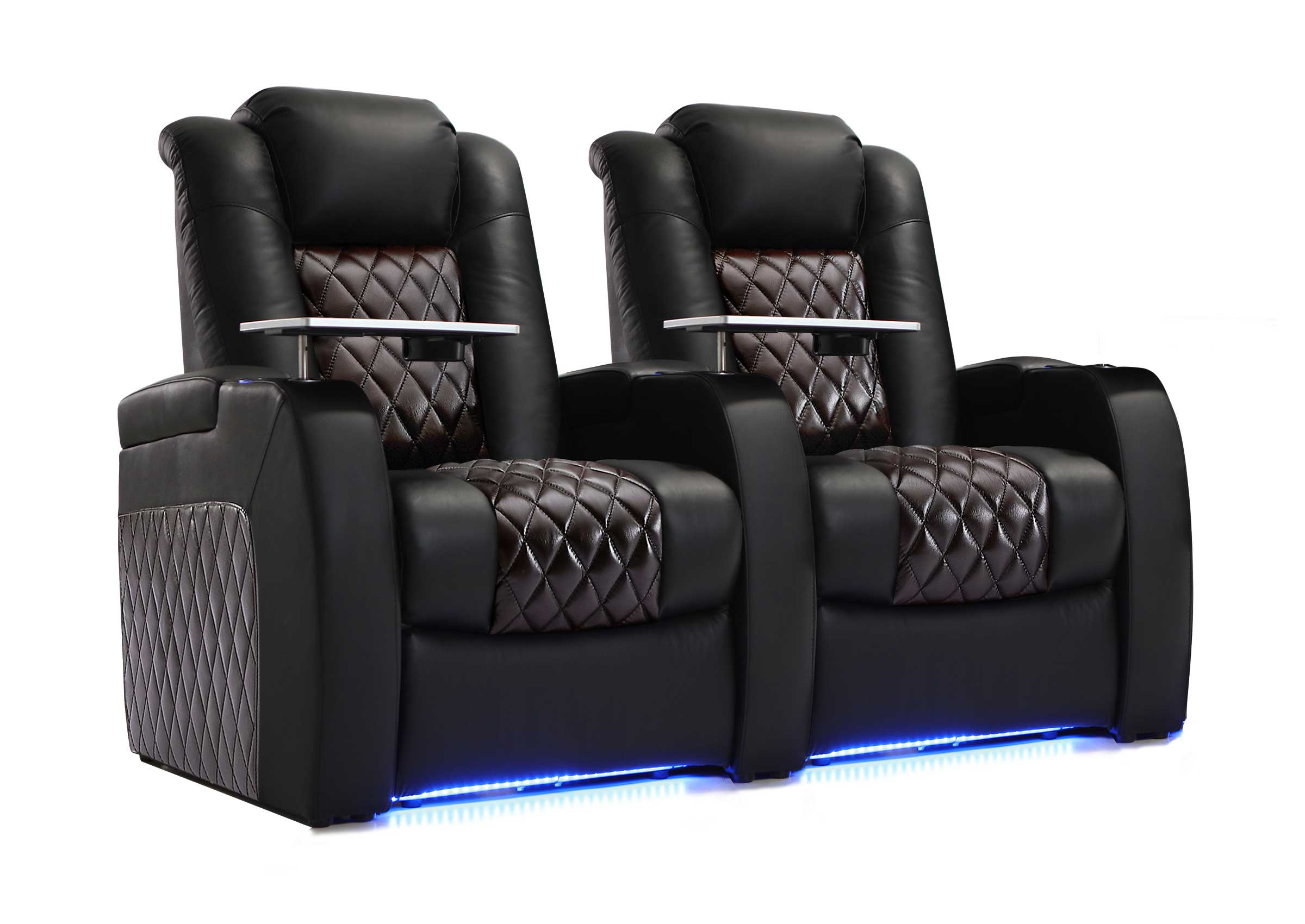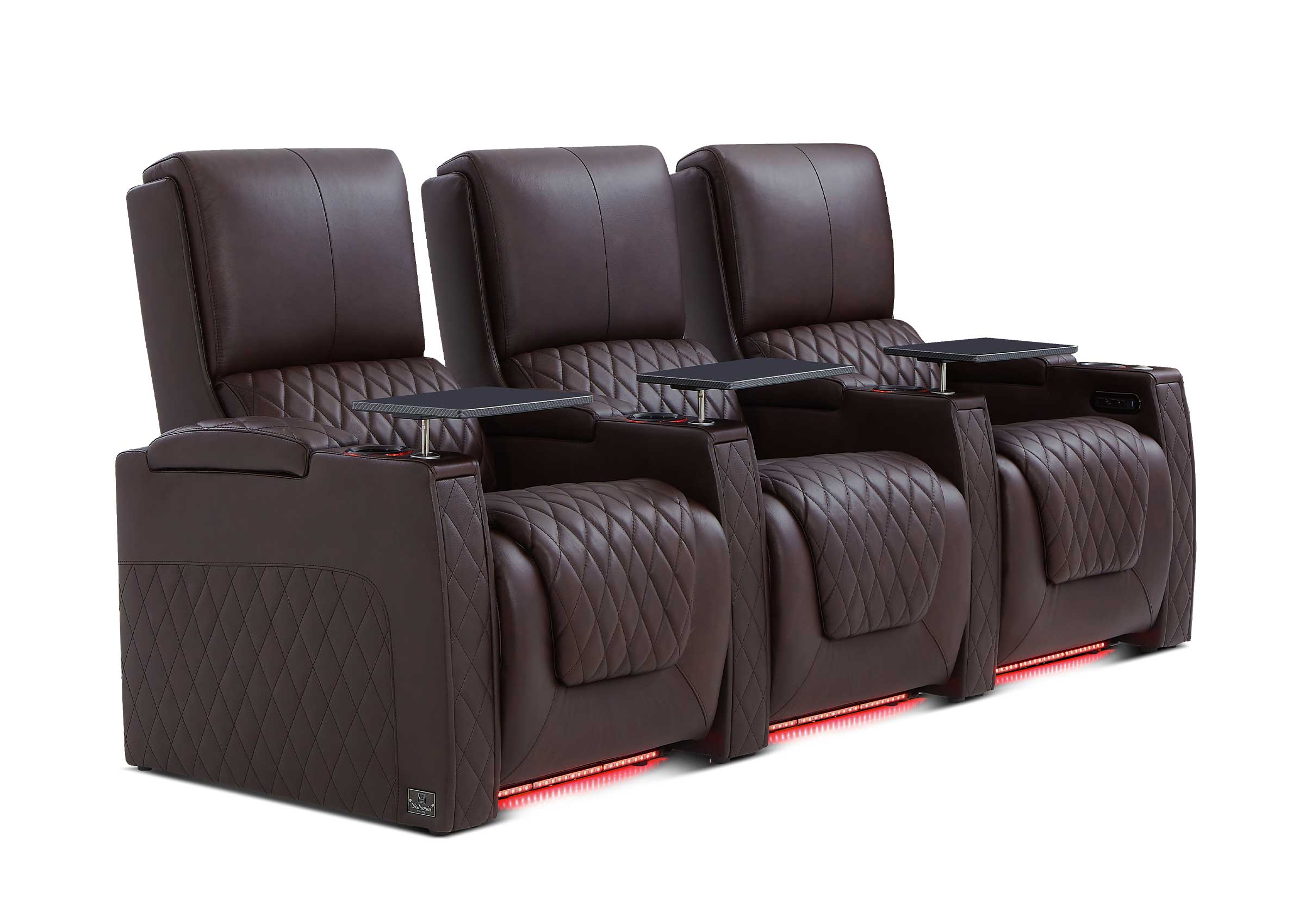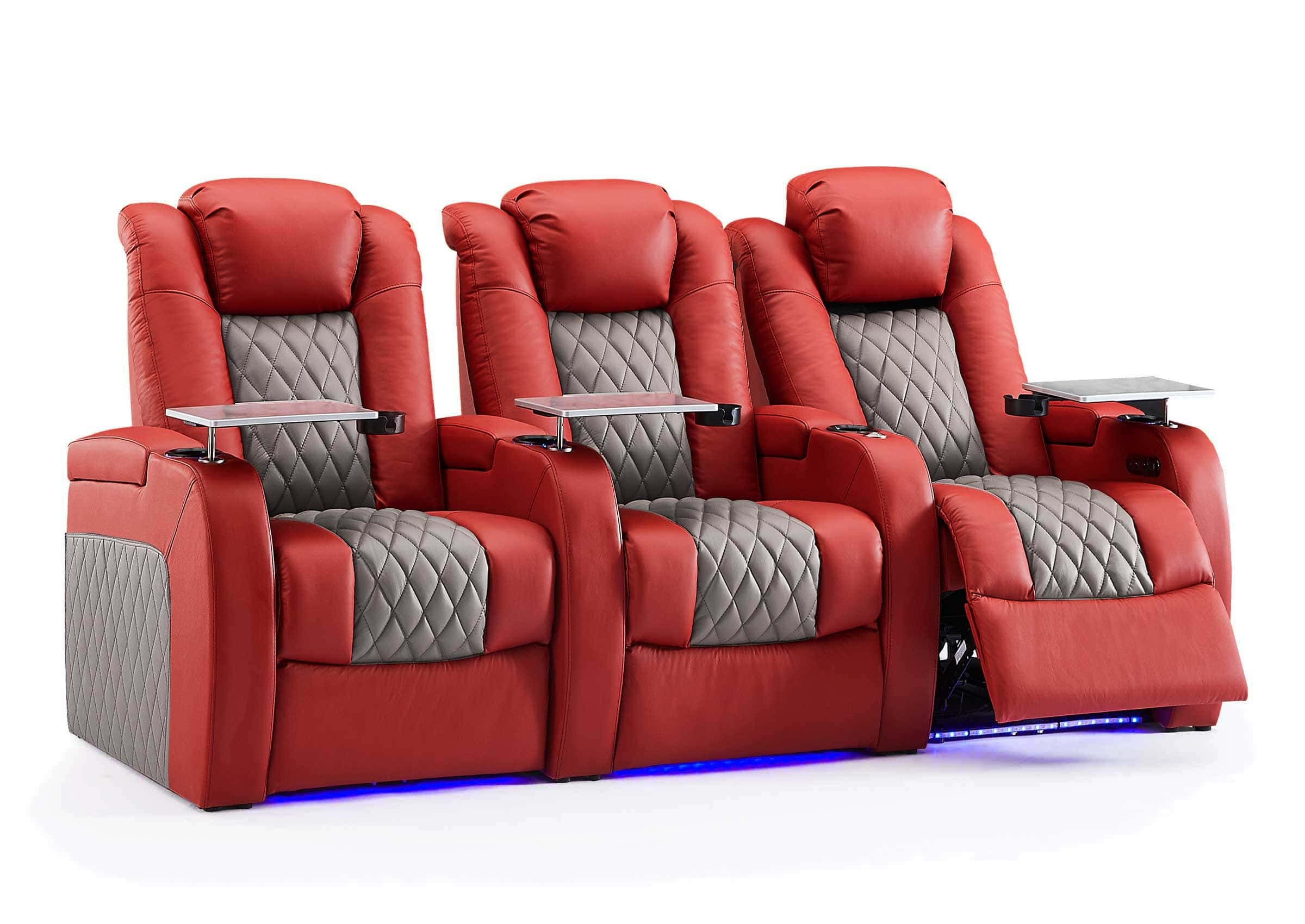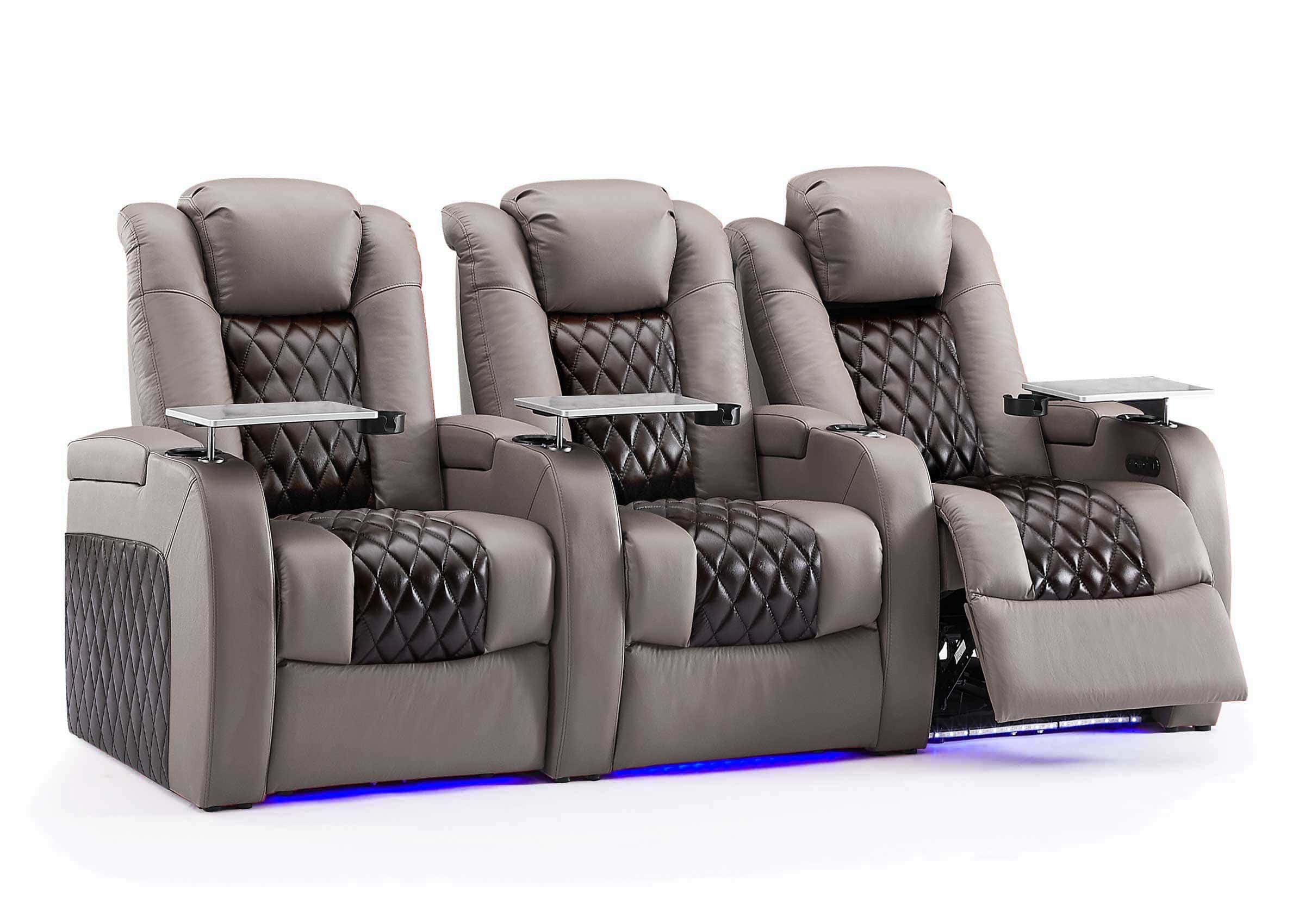
In today's fast-paced life, more and more people are choosing to create a comfortable home theater in order to enjoy movies at home. However, to create an unforgettable movie-watching experience, in addition to state-of-the-art audio and high-definition images, the selection and setup of home theater seating is equally important. In this article, we will provide you with a guide to arranging and setting up your home theater seating to help you create an elegant and comfortable movie viewing space.
Selection of Home Theater Seating
In a home theater system, the choice of seats is crucial. A comfortable and suitable seat not only enhances the movie watching experience, but also protects your spine and neck.
Therefore, when choosing home theater seats, you need to consider the following aspects:
A. Consider the needs of family members
B. Consider the function and features of the seat
C. Budget and Brand Selection
D. Test and compare.

Consider movie viewing needs and space constraints
1. Choose the number of seats according to the size of the home theater space.
If the theater space is larger, then a larger viewing area can be set up, including a larger screen and more seats. Conversely, if the theater space is smaller, then you may need to choose smaller seats and screens. Mrs. Lee's family chose a basement setup for their viewing room. When they chose a home theater, they only chose a 5-seat theater system. Three seats in the front and two seats in the back. In this way, they can save money and still meet their movie viewing needs. Mr. Zhang's family has a large living room space and he wanted to enjoy the feeling of a movie theater at home. Therefore, when he chose a home theater, he chose a large screen and lots of seats. This way, he can watch movies from the comfort of his sofa and enjoy the visual impact of the large screen.
2. Consider the number of people and the frequency of movie watching to choose the seating layout
When buying home theater equipment, it is very important to choose the right number of seats. First, you need to consider the number of family members and how often they watch movies. If there are more family members and they often watch movies together, then you can choose more seats. Conversely, if there are fewer family members, or if they watch movies less frequently, then the number of seats can be appropriately reduced. For example, a family of five with family members who often watch movies together, then a theater system with five or six seats can be chosen. If there are only three family members and the frequency of movie watching is not high, then only 3 seats may be sufficient.
Angle of placement of home theater seats
A. Determine the best viewing position
1. Distance between home theater screen and seats
The distance between the home theater screen and the seats is critical to the viewing experience. The ideal seating layout should ensure that the viewer is able to comfortably watch the screen while avoiding the discomfort of remaining in the same position for long periods of time. To ensure accuracy without the complex math, you can use a TV viewing distance calculator to find the optimal setup for your room. Here are some suggestions to help you optimize your home theater seating layout:
- Screen height: Adjust the height of the screen according to the actual room and seating layout. Usually, the top of the screen about 2-3 feet (60-90 cm) from the floor is a more appropriate height. This avoids neck strain and ensures that all audience members have a clear view of the screen.
- Screen width: According to the seating layout and viewing distance, set the width of the screen reasonably. Generally speaking, the width of the screen should be slightly less than the diagonal length of the seat to ensure that the audience has enough space to feel the immersive experience when watching.
- Seat spacing: Reasonable seat spacing can ensure that the audience has enough comfort when watching the movie. Typically, the seat pitch should be kept between 1.5-2 times the diagonal length of the screen. This ensures that the audience does not feel crowded while watching, and also facilitates air circulation.
- Tilt angle: In order to get a better viewing effect, consider tilting the screen slightly. This allows the viewer's eyes to be more naturally level with the screen and reduces eye fatigue. Generally speaking, the screen tilt angle is set to 1-2 degrees is more appropriate.
- Seat comfort: choosing a comfortable seat is very important for improving the movie watching experience. The seat should have good support and at the same time take into account the principle of ergonomics, so that the audience can maintain a comfortable posture during the viewing process. In addition, the surface material and padding of the seat can also affect comfort, so pay attention to these factors when purchasing a seat.
- Ambient light: In order to obtain the best viewing effect, the impact of ambient light on the viewing experience should be minimized. Indoor light can be controlled by adjusting curtains and lights.
In addition, you can also consider using blackout curtains or special reflective cloth for projection screens to reduce light reflection. In short, when designing a home theater, full consideration should be given to the comfort and viewing experience of the audience. By adjusting parameters such as reasonable seating layout, screen height, width, and seat spacing, you can make your home theater an ideal place to watch movies.
2. Consider visual angle and viewing experience
While there’s not necessarily a bad seat in a home theater, you do want to make sure your theater room recliners are spaced far enough away from the screen, but not too far. Otherwise, your viewing angle—the angle made up of the sides of your screen and the center of your face—will be off, and you won’t pick up on as much detail.
Different associations have different opinions on the best viewing angle, but the ideal angle is usually between 30-40 degrees, with audio and visual company THX claiming that sweet spot lies somewhere around 36 degrees.
While resolution factors into things a bit—after all, the better the resolution, the clearer you’ll be able to see the details on the screen—what matters most is the size of the screen itself.
With the average size of home theater tv screens being about 120 inches, you’ll want to keep your entertainment room chairs roughly 13 feet away from a screen that size.
For every 10 inches in screen size, you’ll want to add about 1 foot to that distance, or subtract a foot if the screen size is smaller.
By no means is the seating distance an exact science. Tinker around with your seating, get ideas for home theater seating layouts online, and see what distance is comfortable for you and your family without putting strain on your eyes or neck.
B. Configuring the Seating Layout of the Viewing Area
Home Theater Seating Single Row Seating Layout
A single row seating layout is a common choice when designing a layout for home theater seating. This layout can provide a comfortable viewing experience while also utilizing space efficiently. First, a single-row seating layout provides a larger viewing field. With a single row of seats, viewers are free to turn their heads to accommodate any position on the screen. This layout is particularly suitable for those who like to enjoy movies from different angles. Secondly, the single-row seat layout is also more flexible. If family members have different viewing habits or different seating needs, such as some preferring to sit in the front row and others in the back, then a single-row seating layout can meet those needs. In addition, single-row seating layouts can be customized to fit the size and shape of the room. For example, if you have a small room space, you can opt for a compact single row seating layout so that you can maximize the use of space. If you have a larger room space, you can opt for a large single row seating layout, which will provide a more spacious viewing area. Overall, the single row seating layout is a great layout for a home theater. It provides a comfortable movie watching experience while also utilizing space efficiently. The couple seats we often talk about belong to these.

Home Theater Seats Multi-Row Seating Layout
In home theaters, the multi-row seating layout is a common design that provides a more spacious and comfortable viewing environment. This layout can be adjusted according to the number of family members and movie watching needs to meet the needs of different people.
Here are some suggestions on multi-row seating layout for home theater:
1. Choose the right seat size: When purchasing home theater seats, make sure that each seat has enough space so that viewers can stretch their legs freely during movie watching. In addition, the height and angle of the seats should be moderate so that the audience will not feel fatigue after a long time of movie watching.
2. Consider the seat layout: When arranging multiple rows of seats, the viewing distance and line of sight should be taken into account. Generally speaking, the distance between the front seats and the screen should be slightly larger than the rear seats to ensure that the audience can clearly see the screen during the movie. In addition, the distance between the seats can also be adjusted to optimize the viewing experience.
3. Consider the viewing environment: In addition to the layout of the seats, the environment of the home theater also has a great impact on the viewing experience. It is important to keep the room clean and comfortable, and avoid too much clutter to interfere with the movie. In addition, you can also set up appropriate lighting and curtains to create a cozy viewing atmosphere. In short, when arranging multiple rows of seats in a home theater, it is important to give full consideration to various factors such as comfort, viewing distance, acoustics, etc., in order to create an ideal viewing space.
Accessories for home theater seats
1. Home theater seats equipped with cushions and back cushions
The comfort of the seats is very important when creating a comfortable home theater environment. In order for viewers to be more relaxed while watching movies or enjoying other entertainment, we recommend equipping your home theater seats with pillows and back cushions. Cushions provide extra support for your neck and reduce neck strain during long viewing sessions. They are usually made of soft materials such as memory foam or polyester, and can be adjusted to the shape of your body to ensure optimal comfort. Additionally, cushions help you maintain proper sitting posture and avoid whiplash problems caused by prolonged head bowing. Back cushions, on the other hand, provide additional support for your back and help maintain the natural curve of your spine. Usually made of high-density foam or other soft materials, back cushions can effectively distribute your body weight and reduce the pressure on your back. Also, backrest cushions can be customized to fit your body size to ensure optimal fit and comfort. In addition to improving comfort, pillows and back cushions can also add some aesthetic appeal to your home theater environment. Many cushions and backrest cushions are designed with stylish patterns and colors that can easily blend in with your home décor. Additionally, these seating accessories can be used as decorative elements in the room to add a unique touch to your home theater space. In conclusion, equipping your home theater seats with cushions and back cushions not only improves comfort, but also helps maintain proper sitting posture and spinal health. At the same time, these seating accessories can also add beauty and personality to your home theater environment. Therefore, we highly recommend that you equip your home theater seats with pillows and back cushions to create a perfect viewing experience.
2. Consider Adjustable Seating
The adjustable feature of the seat is an important element of modern furniture design that offers great convenience and comfort to the user. The presence of such a feature allows the seat to be adjusted according to the user's needs and habits for optimal use. First of all, the height adjustment function of the seat allows the user to adjust the height of the seat according to his/her height and sitting habits in order to obtain the most comfortable sitting position. This is especially important for people who sit for long periods of time at work, as too high or too low a sitting position can put pressure on the spine and affect health. Secondly, the seat's back angle adjustment function allows users to adjust the seat's back angle for better back support and reduced back fatigue. This is especially important for people who need to sit in front of a computer for long periods of time to work. In addition, the seat's tilt angle adjustment feature is also an important adjustable feature. By adjusting the tilt angle of the seat, the user can change the area of contact between the body and the chair, thus changing the support point of the body, reducing the distribution of pressure on the body and improving comfort. Finally, the height and width adjustment function of the armrests of the chair is also very important. By adjusting the height and width of the armrests, users can find an armrest position that best suits them, allowing their arms to rest naturally on the armrests and avoiding arm fatigue when using the computer for long periods of time. The adjustable function of the seat provides users with great convenience and comfort, so that everyone can find the most suitable sitting position for themselves, thus improving the quality of work and life.
3. Equipped with cup holders and storage space
If you like to relax immediately after coming home from work and preparing dinner, you can bring that theater dining experience right into your theater room. Glass carafes for wine and other beverages and tray attachments that can easily hold a tray of dinner or snacks while you watch your favorite movie are among the easiest ways to add to your experience.

FAQ:
1.Which material should I use for home theater seating?
Different materials have different characteristics and textures. Common choices include leather, fabric and faux leather. Leather seating is upscale and durable, while fabric seating is softer and more comfortable. Faux leather, on the other hand, is an affordable option with some stain resistance. When choosing a material, consider comfort, durability and personal preference.
2.What are the seat height and recline angle requirements?
The height of the seat should be suitable for viewers of different heights to ensure a comfortable view of the screen. The tilt angle can be adjusted according to personal preference for the best viewing angle and support.
3.What should be the distance between seats?
Seats should be spaced appropriately to provide adequate personal space and comfort. Generally, it is appropriate to maintain at least one arm's length between each seat.
4.What is the best angle for watching movies on a movie screen and in a seat?
Different associations have different opinions on the best viewing angle, but the ideal angle is usually between 30-40 degrees, with audio and visual company THX claiming that sweet spot lies somewhere around 36 degrees.








